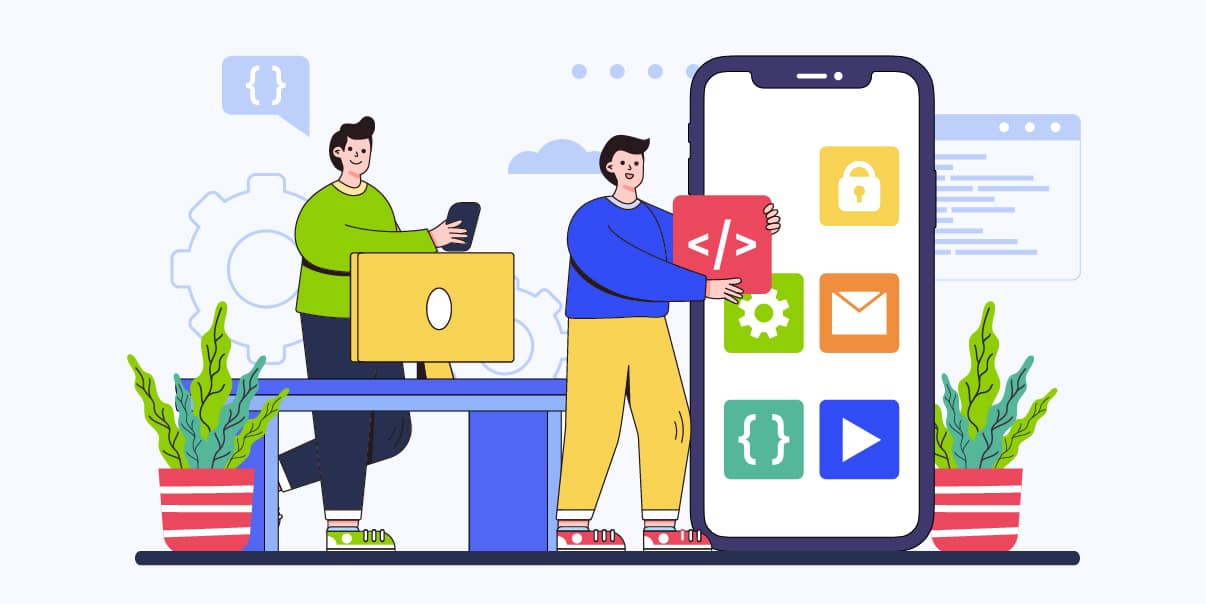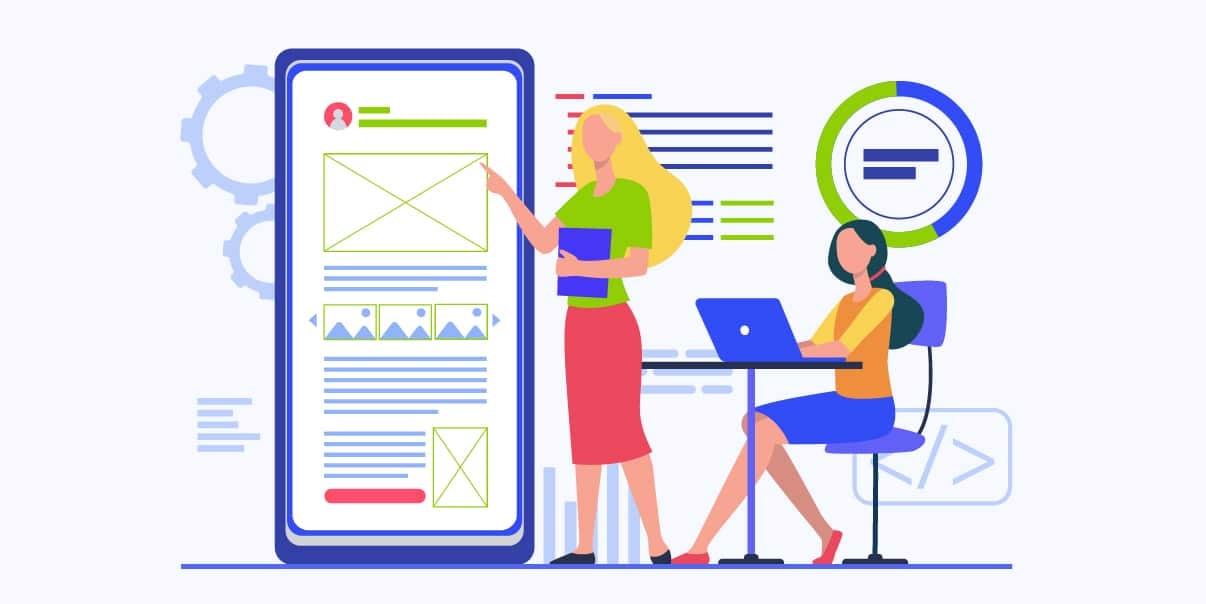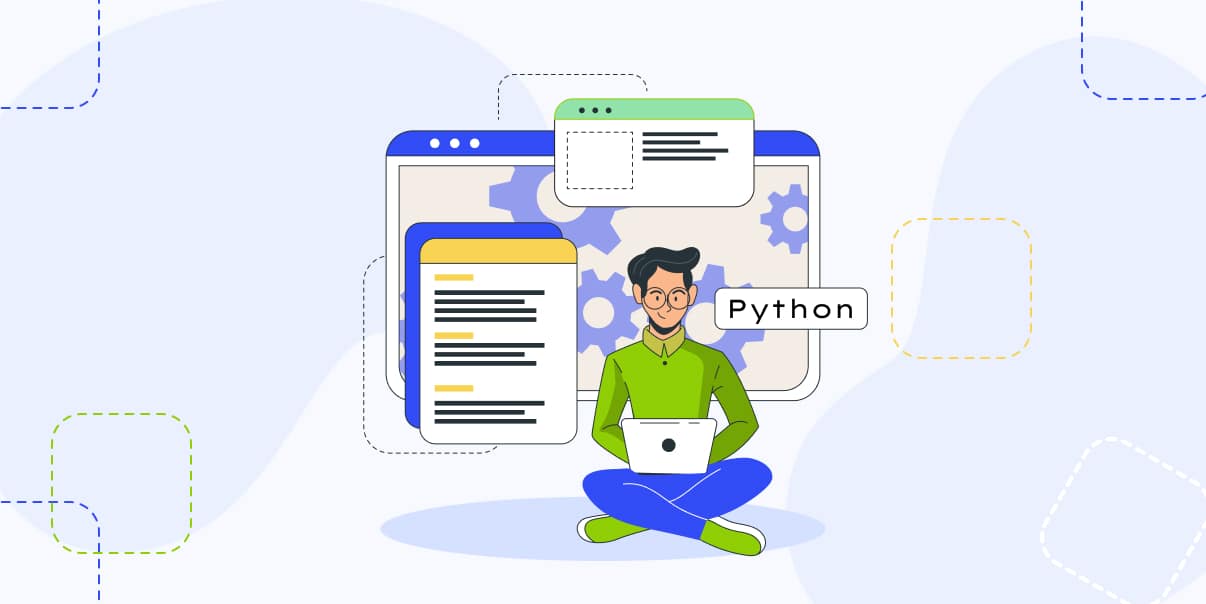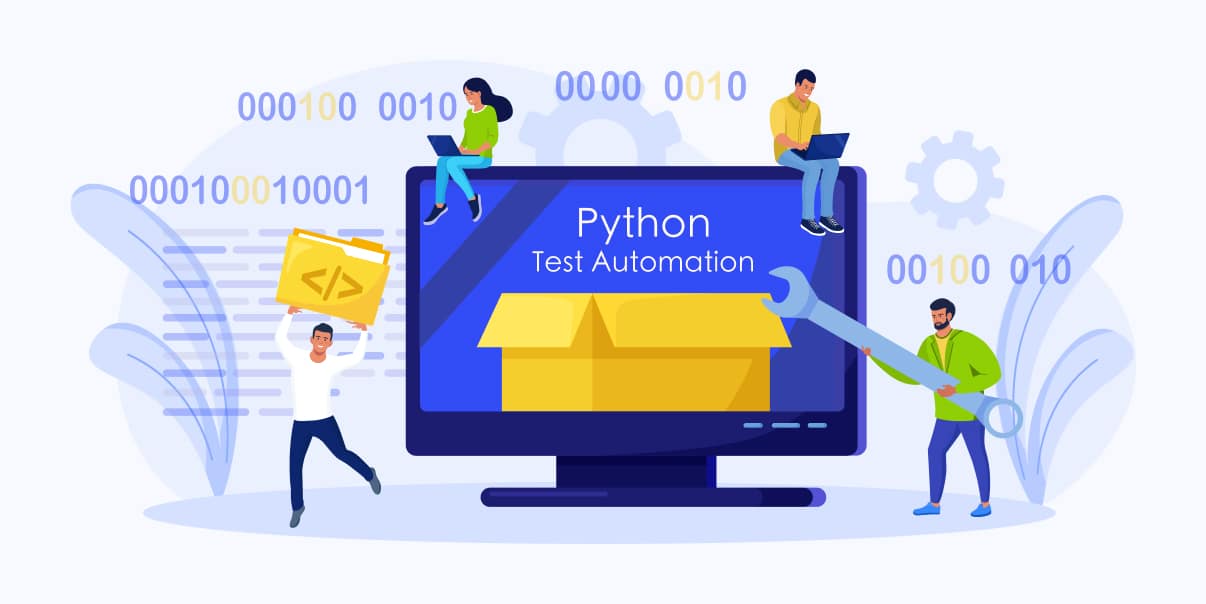iOS App Development for Enterprise: From Concept To Deployment

As the demand for mobile apps grows, businesses are turning to iOS app development. Creating an iOS app increases customer engagement, improves productivity, and streamlines processes. It’s an excellent way to develop mobile apps tailored to a company’s specific needs.
But developing apps for the Apple platform requires specialized skills and knowledge. Still, companies can launch their successful projects with the right approach and resources.
This article will explore the fundamentals of iOS app development for enterprises. Also, we will talk about the necessary skills and tools and the steps to take from concept to deployment.
Importance of a Seamless Development Process From Concept To Deployment
A seamless development process helps get things done faster and better. The process begins with an idea or concept. The concept gets fleshed out by adding details such as what tools and resources you need. Then the iOS app development company works to turn the idea into reality. After completing the development, the project goes through testing and quality assurance. Finally, you can deploy the project for others to use.
Additionally, a seamless process ensures you handle all these steps. When everything follows the same process, projects go smoothly, and everyone involved knows what they need to do next.
A Guide To iOS App Development for Enterprise Owners
The process of creating an app for the Apple platform can be daunting. Companies can now perform iOS app development successfully with specific tools and resources. These apps can make a company more productive by letting employees access data and services faster from any iOS device. Creating an app involves the following:
- Understanding your business needs
- Designing the user interface and experience
- Writing the code that will power the apps
- Testing it to ensure everything works correctly
- Releasing it into the App Store so anyone can download it
Developing an iOS app requires knowledge of programming languages like Objective-C or Swift. Also, it needs the following tools and design principles:
- Xcode
- TestFlight
- Human Interface Guidelines (HIG)
- Apple frameworks like UIKit and Core Data
Essential Steps in the iOS App Development Process
![Essential Steps in the iOS App Development Process [Infographics]](https://www.bitstudios.com/wp-content/uploads/2023/06/iOS-App-Development-For-Enterprise.jpeg)
The iOS app development process involves the following steps:
Conceptualization and Planning
Planning and conceptualizing iOS apps involves using existing data patterns. It identifies potential issues and creates strategies for mitigating them. Also, it requires a deep understanding of the following:
- Company’s goals
- Objectives
- Capabilities
- Resources
Moreover, planning ensures the apps meet current and future user needs while staying within budget.
Identifying Business Needs and Goals
Understanding enterprise iOS app development goals is vital to creating an exceptional app. To do this, you want to think about what the apps should do and how they should look and behave. Doing so will ensure that you create something that meets everyone’s expectations.
Setting Priorities for Time and Cost-Efficiency
When creating an enterprise iOS app, time and cost efficiency should be a priority. You should track your time to complete the project based on the budget and schedule. Setting milestones and deadlines is also vital for staying on track. Also, the scope of work helps identify the iOS app development cost.
Identifying Key Resources and Staff Requirements
Creating enterprise apps for iOS devices requires specialized knowledge and skills. To develop an efficient app, you must do the following:
- Identify the resources needed
- Determine the staff requirements
- Decide which tools and technologies to use
You can also research to stay on top of new mobile app development trends.
Gathering Requirements and Creating a Project Plan
Once you have the resources, gather user requirements and create a project plan. A project plan helps ensure you document everything so your team can follow the steps to launch the app. Additionally, it allows you to track progress and complete tasks on schedule.
Outlining Technical Specifications
Creating technical specifications for enterprise apps helps ensure that everything is accurate. It involves outlining the app’s user interface, designing guidelines, and structuring data. Paying attention to details ensures your app is at its peak performance.
Conducting Market Research and Competitor Analysis
Market research and competitor analysis are essential in gaining insights into user expectations. It also helps you determine what other apps offer and how your app can stand out. Doing this will also help you choose the features and functionality to include in your app.
Identifying Use Cases and Pain Points
Identifying use cases and pain points is crucial in creating an app that meets users’ needs. To do this, think about how you will use the app, what problems it will solve, and what features users need. Documenting the use cases and pain points helps you create an app that will be useful and engaging.
Analyzing User Behavior and Preferences
Analyzing user behavior and preferences is vital in developing a successful app. To do this, you should look at the data from your existing apps and see what users are doing and how they are using the app. Doing this analysis will help you identify areas of improvement and create a great app.
Integrating User Feedback
Integrating user feedback is crucial in creating an app that meets users’ expectations. It incorporates user reviews, suggestions, and other input into the process. Doing this ensures that the app is easy to use, intuitive, and meets users’ needs.
Design and Prototyping
Design is a critical component when developing enterprise iOS apps. It involves creating an interface that makes it easy for users to find the needed features. The following are design considerations to keep in mind when developing an app:
UI/UX Design and Prototypes
Creating a design and prototype for the iOS app ensures that the user interface works as intended and meets all requirements. To do this, use design tools such as Sketch or Figma to create a blueprint of the app. You should also develop prototypes you can refine before the development process begins.
Wireframes and Mockups
Once the design is complete, it is time to start writing code. It involves using programming languages like Objective-C or Swift and frameworks like UIKit and Core Data. Writing the code requires understanding programming principles, design patterns, and other best practices.
Enterprise-Specific Features
Integrating features for enterprises, like security, data privacy, and compliance, into iOS apps is critical. These help protect user data, ensuring the application follows all regulations.
Development and Integration
iOS mobile app development has become integral to enterprise operations. Companies now strive to create custom iOS applications tailored to their specific needs. It takes less time than Android app development because you have to test Android apps across various devices. iOS development is more straightforward and faster.
The process involves the following:
- Understanding business needs
- Designing the user interface and experience
- Writing the code that will power the app
- Testing it to ensure everything is working correctly
- Deploying it into the App Store
Additionally, developing iOS apps requires knowledge of programming languages. Following a seamless development process is crucial for launching successful projects.
Swift and Objective-C Programming
Swift and Objective-C are the most used programming languages for iOS app development. When creating an enterprise app, understanding the principles of these languages is essential.
You can use Swift programming language to make apps for iPhones and iPads. It helps create an app that works well and looks great. Moreover, it is an intuitive, fast, and powerful language that allows you to create engaging iOS applications.
On the other hand, the Objective-C programming language has been around since the early stages of iOS development. It is a C language superset, which you can use for more complex app projects. Also, it provides object-oriented features such as classes, objects, and messages. To write code in Objective-C, you must understand the language’s syntax and logic.
Integrating With Backend Systems
Integrating with backend systems is essential for enterprise app development. It involves connecting the app to a company’s existing data sources, such as databases and web services. Also, it helps ensure that the app is secure and up-to-date with the correct data.
Choosing the right tools and libraries is vital in integrating the app with backend systems. It uses frameworks to create a seamless integration and manage third-party code dependencies.
Testing and Quality Assurance
Testing and quality assurance are essential for iOS app development. It involves various tests to ensure the iOS app works and meets users’ expectations. Doing so ensures that the app is consistent and bug-free before releasing it into the App Store.
Testing on Different iOS Versions and Devices
Testing the iOS app on different versions and devices is vital before launching it. It helps ensure that the app looks great, works as intended, and is bug-free. Doing so requires access to multiple iOS versions and devices to work correctly.
Automated and Manual Testing
It is vital to carry out automated and manual testing to ensure the iOS app works properly. Automated tests involve running a script that checks for coding errors and bugs. Manual tests include getting someone to use the app and checking for any issues. Both types of testing help ensure the app works correctly before its release.
Performance Optimization
Performance optimization ensures the iOS app runs smoothly and efficiently. It involves risk assessment, data analysis, and A/B testing to identify potential performance issues. Doing so helps to ensure that the apps are fast, responsive, and bug-free.
Deployment and Distribution
Once you test the iOS app and are ready for launch, it is time to deploy it into the App Store. You must enroll in the Apple Developer Enterprise Program and make an app developer account. Then study the Apple Developer Program since it is the best option for distributing internal-use apps. Afterward, create an online certificate and submit your app to the Apple App Store for approval. Additionally, you can use third-party distribution tools to deploy and test the apps.
Developing an enterprise iOS app is a complex process. But, following the proper steps can ensure you have successful apps that meet users’ needs. Plus, it helps to have a seamless development process that lets you go from concept to deployment without hiccups. You can create an exceptional iOS app that meets all your needs with the right resources and tools.
App Store Submission and Approval Process
Before you can deploy the app into the App Store, it must go through an approval process. Submitting it to the App Store involves the following tasks:
- Creating a digital certificate
- Signing the app with an Apple ID
- Handing it over to the App Store review team
During this process, they will check if your app meets their guidelines, is bug-free, and provides an enjoyable user experience. After approval, users can download the app from the Apple App Store.
Enterprise Deployment Options
Deploying an enterprise iOS app means delivering it to authorized users. To do this, you can use the App Store or third-party tools such as Apple Business Manager. The latter offers features like bulk app deployment and automated iOS device configurations. It helps ensure that you securely distribute mobile apps to the right people.
Mobile Device Management (MDM)
Mobile Device Management (MDM) is crucial when deploying an enterprise iOS app. It helps ensure that all Apple devices accessing the app comply with the company’s policies. Doing so helps protect sensitive data, prevent malicious threats, and ensure that only authorized users can access the app.
Volume Purchase Program (VPP)
The Volume Purchase Program (VPP) is Apple’s licensing solution allowing businesses to buy iOS apps in bulk. It helps enterprises save time and money when buying apps for their iPhone users. Also, it ensures that all purchased iOS apps are appropriately licensed and deployed to Apple devices.
Ongoing App Updates and Maintenance
Developing a business app for the iOS platform can be a long process. It requires ongoing maintenance and updates to ensure that it works and provides iOS users with a great experience. It involves verifying compatibility with new iOS versions and improving existing features. Additionally, it helps respond promptly to user feedback, releasing updates as needed.
The Importance of a Well-Planned iOS App Development Process
Developing an enterprise iOS app is a massive undertaking. It involves the following:
- Gathering user requirements
- Creating a project plan
- Outlining technical specifications
- Researching the market and competitors
- Analyzing user behavior and preferences
- Integrating user feedback
- Designing the UI/UX
All these tasks need a well-planned iPhone app development process to ensure the apps meet users’ needs.
Following a streamlined development process ensures that your enterprise iOS app is thriving. It includes various tasks, such as:
- Outlining the project
- Creating a schedule
- Assigning tasks to team members
- Setting milestones and deliverables
- Testing the apps thoroughly before the launch
- Deploying it into the Apple Store
Doing so helps ensure that your apps look great, work as intended, and meet users’ needs.
Conclusion
Creating enterprise iOS apps is a challenging but rewarding process. It helps understand the various steps in mobile app development from concept to deployment. Following these can ensure a successful project with apps that meet users’ needs and expectations.
Also, keeping user requirements and feedback in mind will help you create reliable iPhone apps. With the right resources, staff requirements, and tools, you can develop thriving enterprise iOS apps in no time.
We’re BIT Studios!
At BIT Studios we specialize in designing, building, shipping, and scaling beautiful, usable products with blazing-fast efficiency



